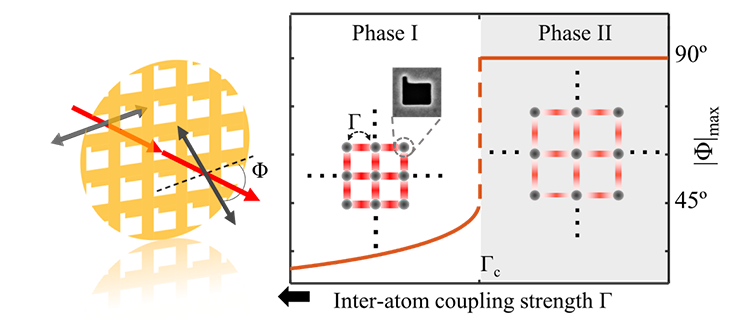Nankai University Research Team Discovered Phase-Transition Optical Activity in Chiral Metamaterials
Phase transitions are the transformations from one phase or state of matter to another one that commonly occur in nature, and is a typical example of the philosophical law which states that changes in quantity leads to changes in quality. A variety of interactions in nature give rise to different types of phase transitions, such as the gas-liquid phase change, the paramagnetic-ferromagnetic phase change, and so on. Phase transitions offer the powerful potential for the manipulation of material properties. For instance, transforming steel from austenite to martensite can greatly increase its strength and hardness, and graphite can be transformed in diamonds under high pressure.

In recent years, metamaterials, as a novel artificial micro-nano material, possess many new properties such as force, heat, light, sound, electricity, magnetism, etc., which are not found in natural materials. Its potential applications have become one of the recent frontiers and focuses of research. Similar to natural materials, the properties of metamaterials are inseparable from the properties of their protoplasts and the interactions determined by their spatial arrangement. However, are artificial metamaterials able to have phase transition taken place just like natural materials in order to achieve property manipulation? To answer this question, a research team, led by Associate Prof. Mengxin Ren and Prof. Jingjun Xu from the School of Physics of Nankai University, has conducted comprehensive research and discovered phase-transition optical activity in chiral metamaterials.
From the chiral molecules based on Born-Kuhn model, the team introduced primitive-cells interactions as a way to describe the optical activity in chiral materials. The research result shows that optical rotation changes degree from 45º to 90º when the primitive-cells interaction Γ changes slightly near the critical threshold Γc. To testify to this result, the team further processed an L-shaped chiral metamaterial to adjust the interactions of primitive cells by changing the array of the lattice constant, and measured the polarization state of the emitted light. This experiment proves the assumed theory to be true, as well as the actual existence of phase-transition optical activity in chiral metamaterials. The outcome offers new ideas for the design of novel micro-nano polarized optical elements and the development of all-optical switches with high sensitivity, and sets a stage for the study of novel artificial phase-change metamaterials and their property manipulations.
The research is published in Physical Review Letters and is titled Phase-transition optical activity in chiral metamaterials. Xie Fei, a doctoral student at Nankai University, is the first author, and Associate Prof. Ren Mengxin and Prof. Xu Jingjun are the co-corresponding authors. This research work is supported by the National Key Research and Development Program of China and the National Natural Science Foundation of China.
You can click here to read more about the theis.
(Reported by Mengxin Ren, Translated by Meixu Wu, Edited by STEFAN SARAH DANIELLE and JianjingYun)









